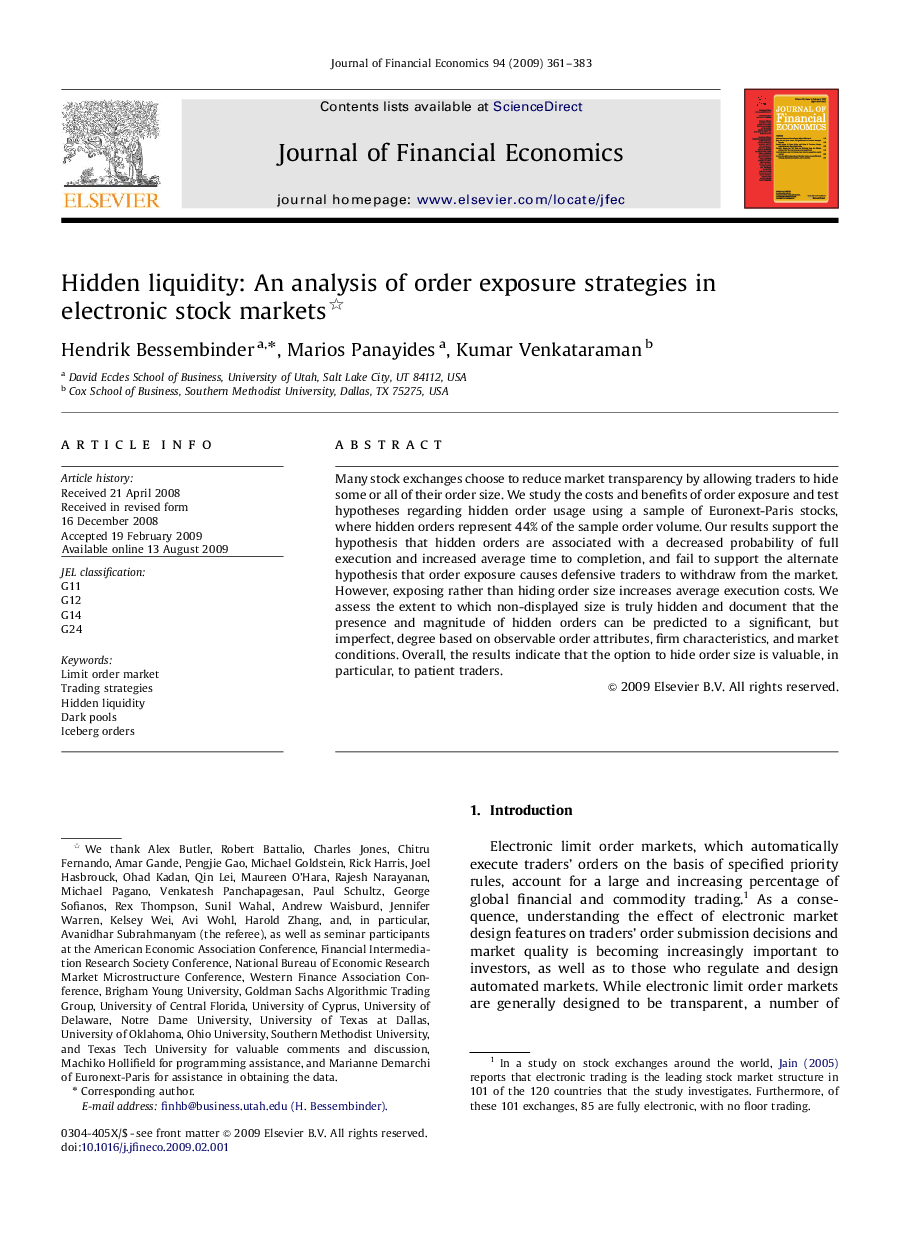| Article ID | Journal | Published Year | Pages | File Type |
|---|---|---|---|---|
| 959895 | Journal of Financial Economics | 2009 | 23 Pages |
Many stock exchanges choose to reduce market transparency by allowing traders to hide some or all of their order size. We study the costs and benefits of order exposure and test hypotheses regarding hidden order usage using a sample of Euronext-Paris stocks, where hidden orders represent 44% of the sample order volume. Our results support the hypothesis that hidden orders are associated with a decreased probability of full execution and increased average time to completion, and fail to support the alternate hypothesis that order exposure causes defensive traders to withdraw from the market. However, exposing rather than hiding order size increases average execution costs. We assess the extent to which non-displayed size is truly hidden and document that the presence and magnitude of hidden orders can be predicted to a significant, but imperfect, degree based on observable order attributes, firm characteristics, and market conditions. Overall, the results indicate that the option to hide order size is valuable, in particular, to patient traders.
